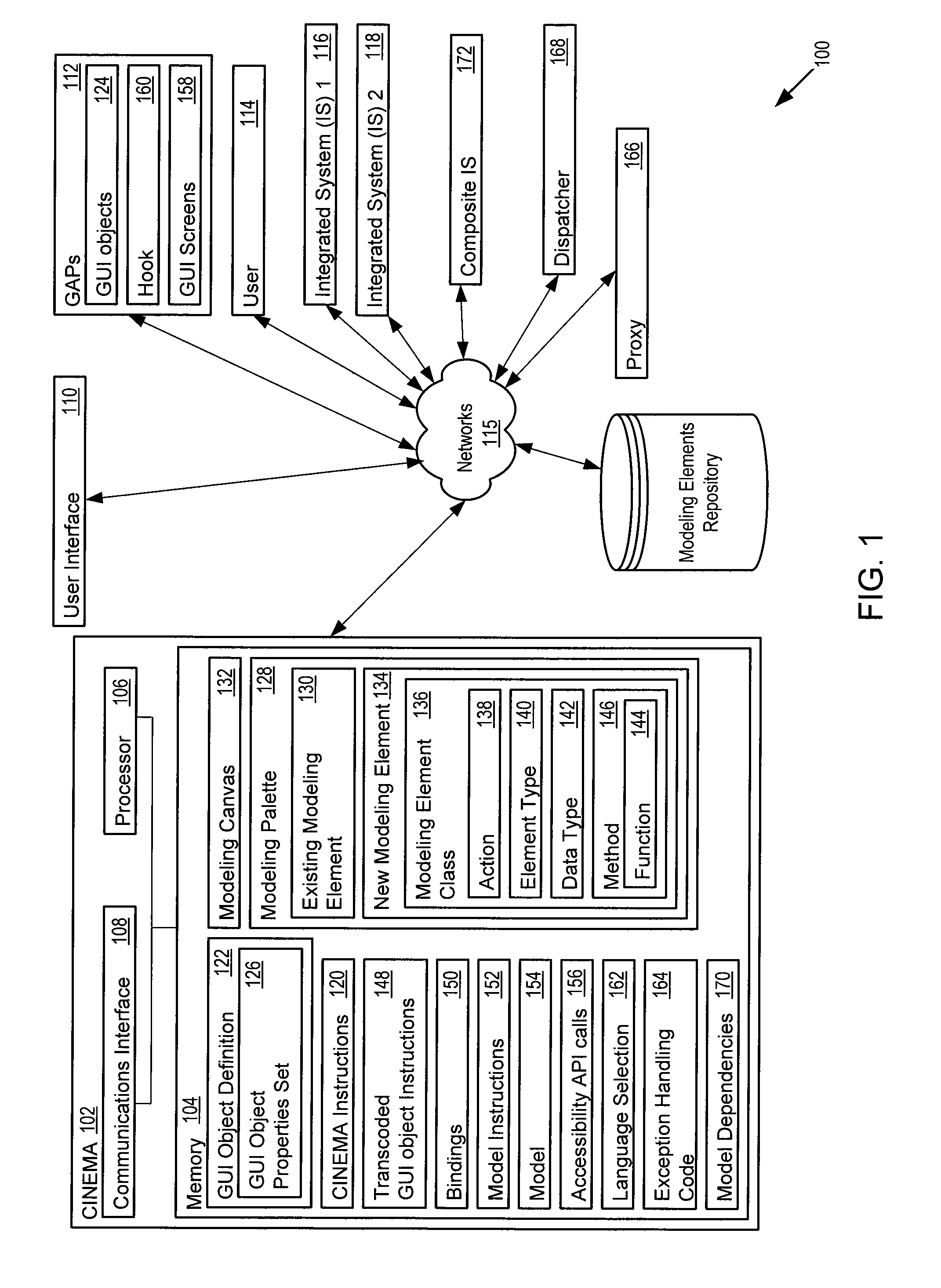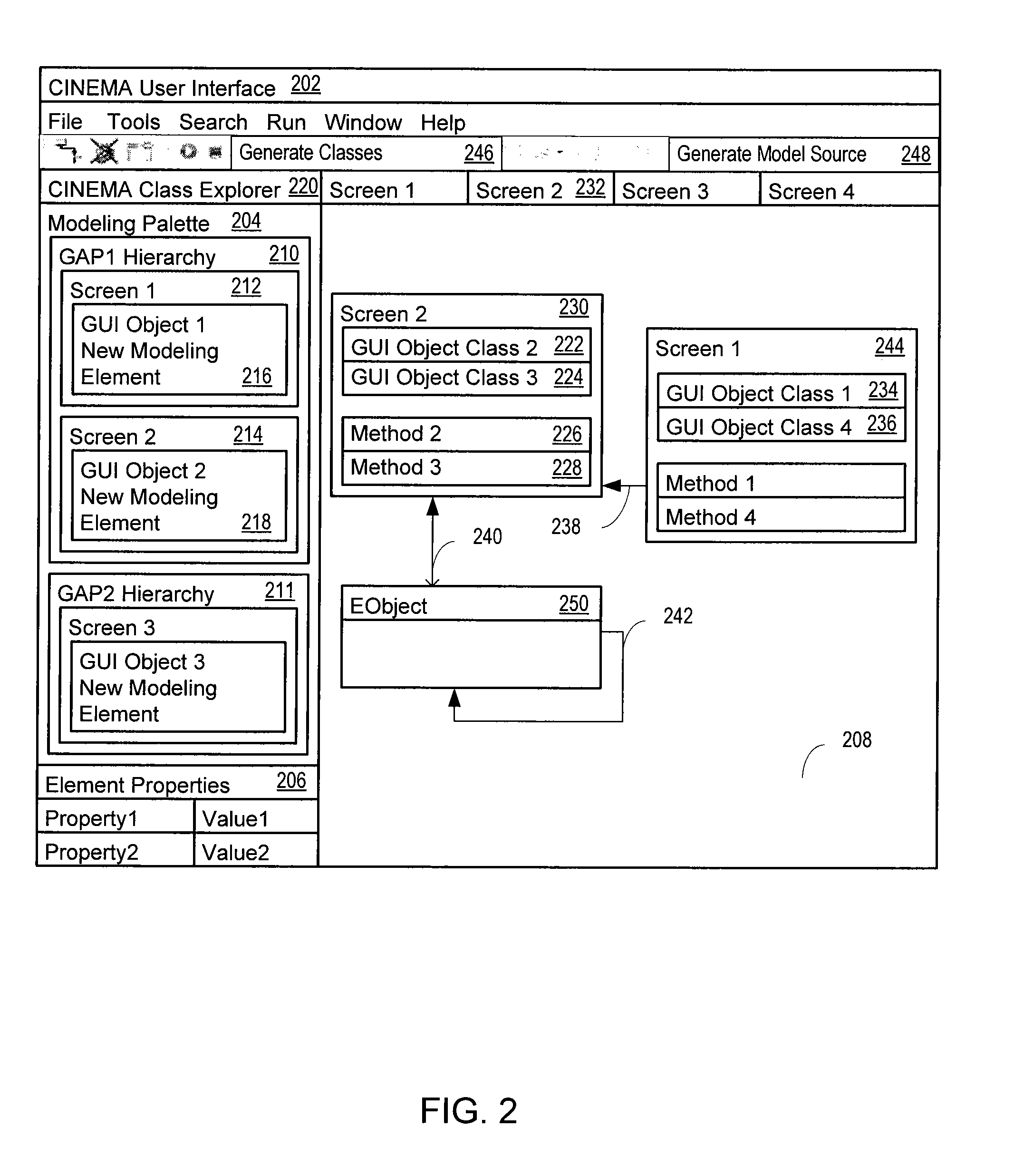Compositional modeling of integrated systems using event-based legacy applications
a modeling environment and event-based technology, applied in the field of composition modeling of integrated systems, can solve problems such as difficult modeling of new integrated systems that include gaps, difficult reengineering gaps into programming components, and difficult authorization of source code changes that may break gaps, so as to facilitate users to create models, wide applicability of cinema
- Summary
- Abstract
- Description
- Claims
- Application Information
AI Technical Summary
Benefits of technology
Problems solved by technology
Method used
Image
Examples
Embodiment Construction
[0032]FIG. 1 illustrates a system configuration 100 for a system and tool referred to as CompositioNal Event-based Modeling of integrated Applications (CINEMA) 102 (e.g., a modeling tool) that enables users to model and create inte-grated systems composing GAPs and other programming components (e.g., web services). The CINEMA system configuration 100 includes the CINEMA system 102, which includes a memory 104 coupled to a processor 106, communicating through a communication interface 108 to components of the CINEMA system configuration 100. The CINEMA system configuration 100 further includes a user interface 110, GAPs 112, users 114 (e.g., modelers), integrated systems (e.g., 116 and 118) and composite integrated systems 172 (e.g., compose GAPs 112 and integrates systems such as 116 and 118).
[0033]The memory 104 stores compositional event-based modeling (CINEMA) instructions 120 that when executed by the processor 106 cause the processor to receive, through the user interface 110, ...
PUM
 Login to View More
Login to View More Abstract
Description
Claims
Application Information
 Login to View More
Login to View More - R&D
- Intellectual Property
- Life Sciences
- Materials
- Tech Scout
- Unparalleled Data Quality
- Higher Quality Content
- 60% Fewer Hallucinations
Browse by: Latest US Patents, China's latest patents, Technical Efficacy Thesaurus, Application Domain, Technology Topic, Popular Technical Reports.
© 2025 PatSnap. All rights reserved.Legal|Privacy policy|Modern Slavery Act Transparency Statement|Sitemap|About US| Contact US: help@patsnap.com



